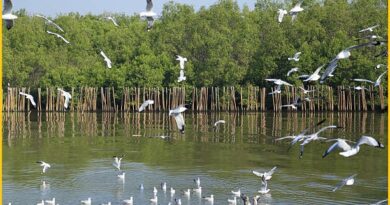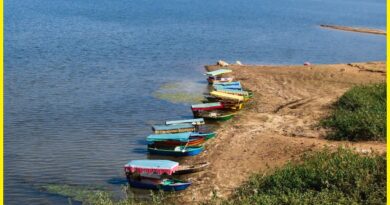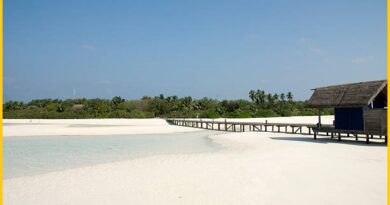Dun Briste-The Rugged Sea Stack of County Mayo’s Ireland
Dun Briste Ireland
“Dún Briste” is a sea stack located off the coast of County Mayo in Ireland. The name “Dún Briste” is Irish for “broken fort,” and it is also known as the “Broken Fort.” This geological formation was once connected to the mainland but was separated from it due to erosion, leaving it isolated in the Atlantic Ocean. Dún Briste is a popular tourist attraction and is known for its stunning and rugged beauty.
The sea stack is composed of layers of shale and sandstone, which have been shaped by the relentless forces of wind and water over thousands of years. It stands at approximately 63 meters in height and is a prominent feature along the Wild Atlantic Way, a scenic coastal route in Ireland.
Visitors to Dún Briste can enjoy breathtaking views of the Atlantic Ocean and the surrounding coastline. The area is also rich in wildlife, making it a popular spot for birdwatching. It’s an excellent place to explore for those interested in geology, nature, and Ireland’s stunning coastal landscapes.
Dun Briste sea stack
Dún Briste Ireland is a stunning geological formation and a popular tourist attraction. Here are some key details about the Dún Briste sea stack:
Geological Formation- Dún Briste is a sea stack, which means it is a tall, isolated column of rock that stands in the sea. It was once part of the mainland but was shorn from the mainland in 1393 by a severe storm that left poor unfortunates stranded upon it.

Location- Dún Briste is situated near the village of Ballycastle on the north coast of County Mayo. It is part of the rugged and picturesque coastline of the Wild Atlantic Way, one of Ireland’s most scenic coastal routes.
Height- Dún Briste rises to a height of approximately 63 meters above sea level. It presents a dramatic and imposing sight against the backdrop of the Atlantic Ocean.
Geological Composition- The sea stack is primarily composed of alternating layers of shale and sandstone. These sedimentary rocks were formed millions of years ago and have been shaped by erosion into the distinctive stack we see today.
Tourism- Dún Briste is a popular attraction for tourists and photographers due to its natural beauty and unique geological features. Visitors can access viewpoints along the coastline to admire the sea stack and enjoy stunning views of the surrounding area.
Wildlife- The area around Dun Briste Ireland is also known for its rich wildlife, including seabirds such as fulmars, guillemots, and kittiwakes. Birdwatchers often visit the site to observe these species.
Dun Briste geology
The formation and geology of Dun Briste Ireland are the result of complex processes that have occurred over millions of years.
Rock Types- Dún Briste is primarily composed of layers of shale and sandstone. These sedimentary rocks were originally deposited on the seabed during the Carboniferous period, approximately 350 million years ago. The alternating layers of shale and sandstone can be seen in the vertical strata of the sea stack.
Erosion- The dramatic shape of Dun Briste Ireland has been primarily shaped by erosion processes. The Atlantic Ocean has been relentlessly eroding the coastline over millions of years, gradually wearing away the softer shale layers and leaving behind the more resistant sandstone layers as a sea stack. This process is ongoing, and the sea stack continues to be shaped by the forces of wind and water.
Geological Significance- Dun Briste Ireland is a significant geological site because it provides a glimpse into the ancient geological history of Ireland. The different rock layers reveal information about past environments, including the presence of shallow seas and the deposition of sediments during the Carboniferous period.
Fossils- While Dún Briste itself is not known for abundant fossils, the surrounding rocks in County Mayo contain a rich fossil record. Fossils of ancient marine life, such as brachiopods, corals, and crinoids, can be found in the shale and sandstone layers of the region.
What type of rock is Dun Briste made of?
Dun Briste Ireland is primarily composed of sedimentary rock layers, specifically shale and sandstone.
Shale- Shale is a fine-grained sedimentary rock composed primarily of clay minerals, silt-sized particles, and organic matter. It has a layered or laminated appearance and often splits into thin, flat sheets. Shale typically forms in quiet, low-energy environments such as the bottom of lakes, riverbeds, or the seabed. In the case of Dún Briste, shale layers make up a part of the sea stack’s geology, and these layers are susceptible to erosion due to their relatively soft and easily weathered nature.
Sandstone- Sandstone is another type of sedimentary rock composed mainly of sand-sized mineral grains (primarily quartz) bound together by a cementing material. It is typically more resistant to erosion than shale because it consists of larger, more tightly packed grains. Sandstone forms in environments with higher energy, such as riverbeds, deserts, or shallow marine settings. In the case of Dún Briste, sandstone layers are interspersed with shale layers and make up the more resistant portions of the sea stack, contributing to its rugged appearance.

How to reach Dun Briste
Dun Briste Ireland is located off the coast of County Mayo in Ireland, and it can be viewed from the mainland. To reach the best viewing points for Dún Briste, you can Travel to Ballycastle, County Mayo- The nearest town to Dún Briste is Ballycastle, which is a small village on the north coast of County Mayo. You can reach Ballycastle by road.
From Ballina- If you are coming from a larger town like Ballina, which is located to the south of Ballycastle, you can take the N59 road northward. Follow signs for Ballycastle.
From Belmullet- If you are coming from the west, Belmullet is another nearby town. Take the R314 road to Ballycastle.
Walk to Viewing Points: From Ballycastle, you can walk to designated viewing points along the coastline to see Dún Briste. The viewing points provide stunning vistas of the sea stack and the surrounding area. Be sure to wear appropriate footwear and be cautious, as the terrain can be uneven.
Guided Tours- Alternatively, you may find guided tours or excursions that offer visits to Dun Briste Ireland, and other points of interest along the Wild Atlantic Way. These tours often provide transportation and local insights about the area.



